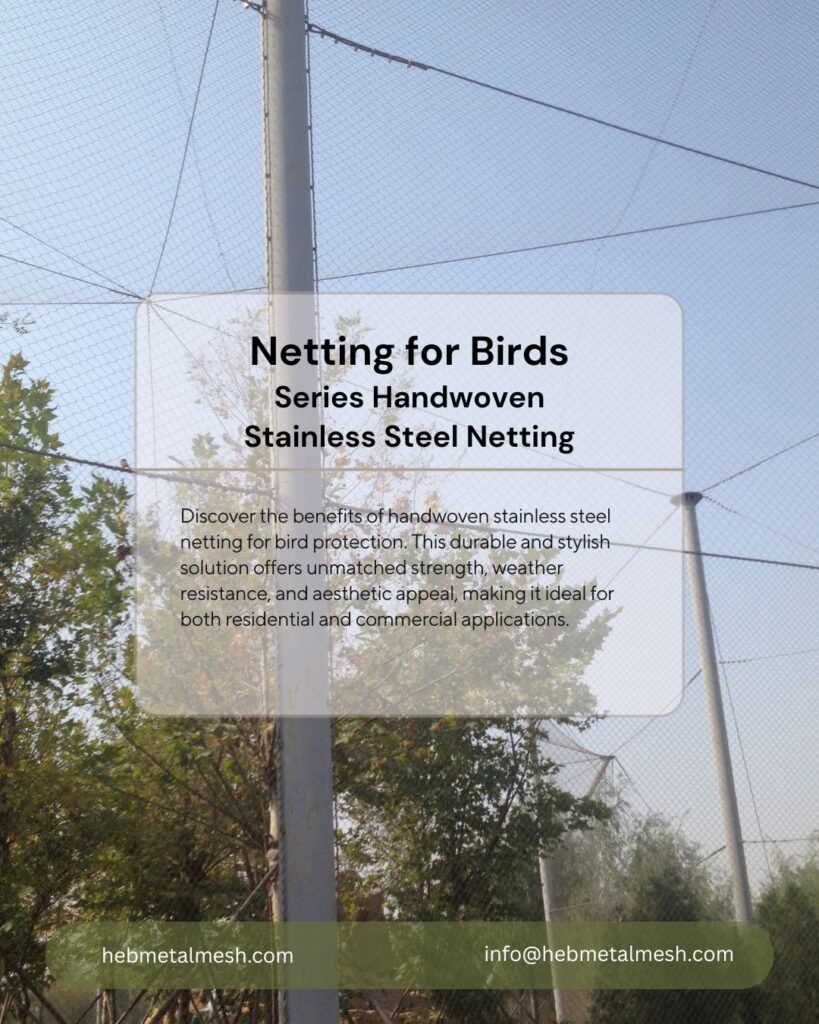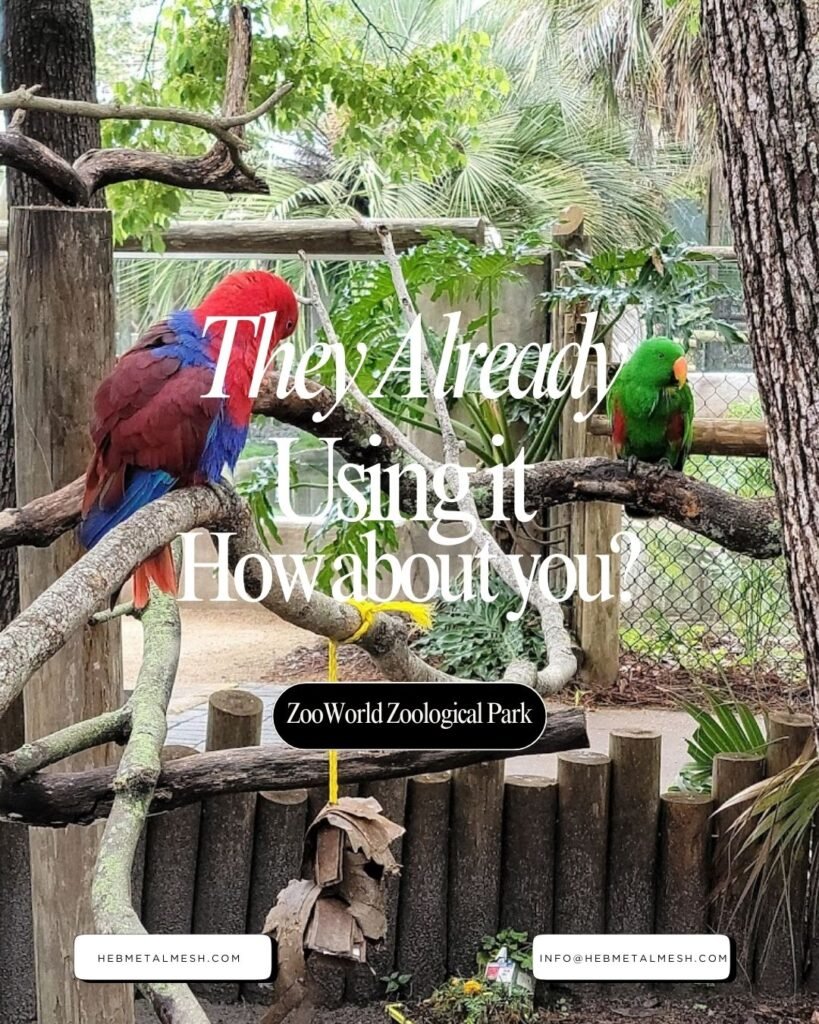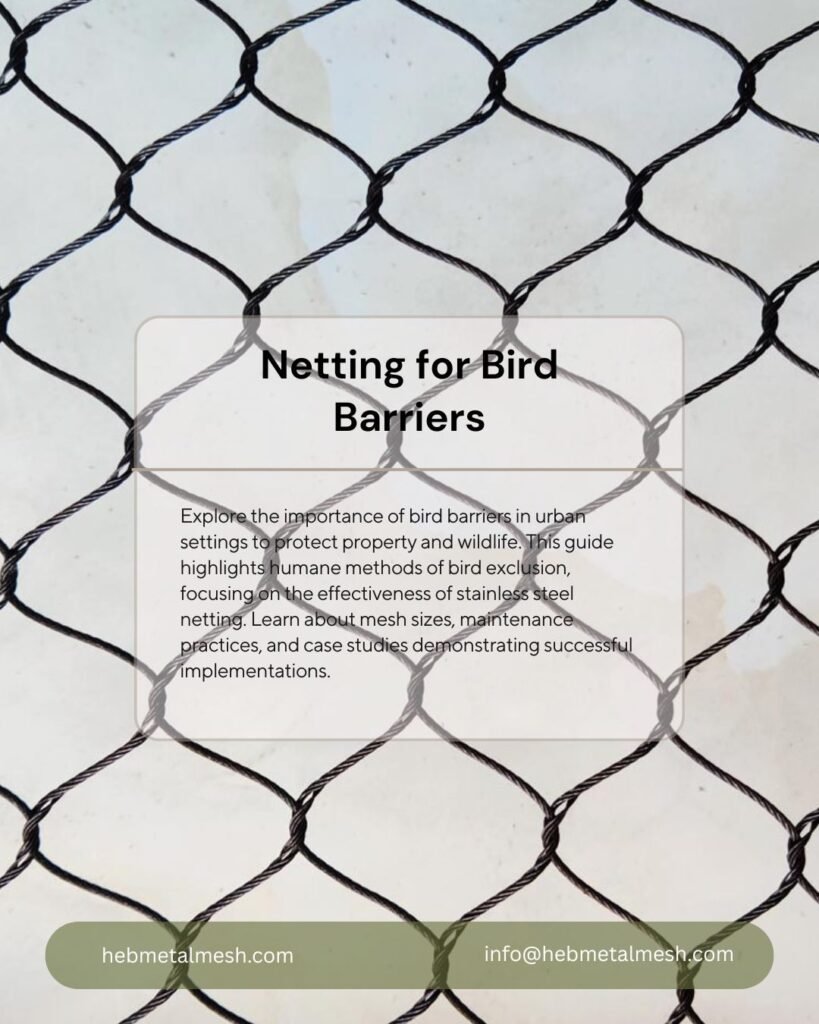Introduction to Bird Barriers
Bird barriers are essential tools employed in urban settings to mitigate the often disruptive presence of birds. These barriers play a crucial role in protecting both property and local wildlife. With increasing urbanization, the challenges posed by birds, such as nesting and roosting on buildings, have led to the need for effective strategies that deter these animals without causing harm.
One of the primary issues related to bird presence in urban areas is property damage. Birds can create significant messes, often leading to unsightly and unsanitary conditions. Their droppings can corrode building materials, stain surfaces, and contribute to health risks associated with bird-borne diseases. As a result, implementing a bird barrier can safeguard both property aesthetics and structural integrity. Additionally, birds tend to take over ledges and eaves, resulting in noise pollution and disturbances that can affect residents’ quality of life.
Moreover, the welfare of wildlife is a paramount consideration in the implementation of bird exclusion methods. Traditional methods that aim to remove birds can often lead to unintended harm and suffering. Hence, utilizing humane bird barriers ensures that wildlife is not adversely affected, allowing them to relocate without injury. For instance, stainless steel netting has gained recognition as an exemplary long-term solution. It not only effectively deters birds but also lasts significantly longer than other materials, thus offering a sustainable option for managing bird populations.
In summary, addressing the challenges presented by birds in urban environments is essential for maintaining a harmonious balance between human habitation and wildlife. With the adoption of high-quality bird barriers like stainless steel netting, property owners can secure their buildings while promoting humane practices in bird exclusion. This guide will explore further why stainless steel is a premier choice for bird exclusion methods, reinforcing its role as a reliable solution.

Understanding Humane Exclusion
Humane exclusion presents a compassionate approach to managing bird populations, focusing on prevention rather than harm. This strategy emphasizes the importance of creating barriers that deter birds from nesting or roosting in unwanted areas without inflicting injury or death. The ethical advantages of humane exclusion are significant, particularly when considering alternative methods such as deterrents or poisons that can have detrimental effects on local ecosystems.
Utilizing bird barriers, such as stainless steel netting, exemplifies an effective humane exclusion method. These barriers provide a physical deterrent that prevents birds from accessing specific spaces. Unlike poisons and other harmful measures, which can lead to unintended consequences for not only the targeted birds but also non-target species, humane exclusion respects the integrity of wildlife populations. The use of a bird barrier ensures that birds are not harmed, while simultaneously protecting property and maintaining public safety.
Moreover, chemical deterrents may result in adverse effects on the environment, affecting plants and other animals within the vicinity. In contrast, humane exclusion through reliable barriers minimizes risks to ecosystems and promotes coexistence between humans and birds. By adopting a humane approach to bird population management, individuals and organizations are contributing to a more sustainable environment, where wildlife is respected and protected.
It is also important to consider that humane exclusion techniques are often more effective in the long term compared to harmful methods. Birds that are repeatedly subjected to stress can alter their behaviors, leading to larger issues in population dynamics. By investing in solutions that prioritize humane methods, society can cultivate a more harmonious relationship with wildlife, ultimately leading to healthier ecosystems and communities. Adopting humane exclusion practices is a step towards responsible stewardship of the environment, demonstrating respect for nature while effectively managing the challenges posed by birds.
The Science of Mesh Size
When selecting a bird barrier, understanding mesh size is paramount for effectively deterring unwanted avian species while still accommodating necessary environmental factors such as light and airflow. Mesh size, which refers to the dimensions of the openings within the barrier, plays a critical role in determining its overall efficacy. An optimal mesh size can selectively exclude specific bird species, ensuring that desired wildlife remains undisturbed while preventing the intrusion of pests.
A key consideration is the target bird species. For instance, smaller birds, such as sparrows and finches, may require a mesh size that is less than one inch, while larger species such as gulls and pigeons can be deterred with bigger openings. The science behind this selection is grounded in the natural behavior and physical characteristics of different bird types. Birds are often attracted to nesting or feeding opportunities that four or five-inch openings in standard netting can provide. Thus, utilizing a finer mesh effectively restricts access without completely obstructing visibility or ventilation.
Moreover, the material composition of the bird barrier is equally important. Stainless steel netting, for example, offers unrivaled durability, while its mesh can be tailored to practically any requirement. The combination of stainless steel’s strength and a suitably defined mesh size allows for long-term installation, ensuring that the barrier remains effective against various environmental challenges. Additionally, mesh configurations that allow for airflow can help maintain a healthy environment within areas where avian access is limited.
In conclusion, understanding the importance of mesh size in the context of bird barriers allows for more informed decision-making. Carefully choosing the right mesh not only provides barriers against unwanted bird species but also ensures the essential elements of light and airflow are preserved, creating a balanced environment.

The Advantages of Stainless Steel Netting
Stainless steel netting stands out as a premier choice when considering bird barriers due to its remarkable durability and exceptional performance in various environmental conditions. Unlike other materials that may degrade over time, stainless steel netting offers a long-lasting solution for property owners seeking effective bird control. The inherent properties of stainless steel allow it to resist corrosion and rust, which is a common issue faced by bird barriers made from less robust materials.
This type of netting exhibits unparalleled resistance to weather-related wear and tear. For instance, extreme temperatures, heavy rainfall, and exposure to corrosive substances do not significantly impact the integrity of stainless steel netting. Many alternatives, such as plastic or fiber-based barriers, may weaken quickly under these conditions, requiring frequent replacements and continuous maintenance. Consequently, opting for stainless steel netting can ultimately be more cost-effective, reducing the need for ongoing repairs or replacements.
Additionally, stainless steel netting offers excellent tensile strength, ensuring that it can endure physical stress without sagging or breaking. Its robust construction means that it can effectively deter birds from accessing undesirable areas, such as rooftops, eaves, or gardens, without compromising safety or aesthetics. The visual appeal of stainless steel netting blends seamlessly into various architectural styles, maintaining the integrity of the building’s appearance while providing a functional barrier.
Furthermore, this type of netting is non-toxic and environmentally friendly, making it a responsible choice for bird control. Property owners can trust that stainless steel netting effectively serves as a bird barrier while promoting ethical treatment of wildlife. In conclusion, the numerous benefits of stainless steel netting—ranging from its durability and weather resistance to its long-term cost-saving potential—make it the optimal choice for anyone seeking a reliable bird control solution.

Handwoven Netting: A Unique Selling Proposition
Handwoven stainless steel netting distinguishes itself from other types of bird barriers through its exceptional durability and adaptability. Unlike machine-made alternatives that often present a one-size-fits-all solution, handwoven netting is crafted with precision, allowing for a customized fit that can accommodate various structures and architectural designs. This bespoke feature ensures that every installation effectively meets the unique requirements of the site, reducing potential vulnerabilities where birds might otherwise gain access.
The craftsmanship involved in the handweaving process not only emphasizes quality but also enhances the overall strength of the netting. Each strand is meticulously intertwined to create a strong barrier that can withstand harsh weather conditions and resist wear from environmental factors. This superior strength offers a long-term solution in the fight against bird infestations, ensuring that facilities remain fortified over time. Handwoven netting stands as a testament to the skills of artisans dedicated to producing a product that delivers both functionality and aesthetic appeal.
Furthermore, the level of attention to detail in handwoven bird barriers is unparalleled. Craftsmen focus on creating a netting solution that aligns seamlessly with the surrounding environment. Such integration not only serves to protect structures but also retains the visual integrity of the architecture. By employing materials designed to blend harmoniously with their context, handwoven netting enhances the overall aesthetic of buildings, unlike more industrial-looking machine-made options.
In a world where mass production often compromises quality, handwoven stainless steel netting proves to be a unique selling proposition. Its combination of strength, adaptability, and craftsmanship makes it an ideal choice for those seeking an effective and visually appealing bird barrier solution. This approach not only provides peace of mind but ensures an investment in a product built to last.
Case Studies: Successful Implementations of Bird Barriers
In the pursuit of effective bird management and prevention strategies, several real-world examples demonstrate the successful implementation of bird barriers, particularly through the use of stainless steel netting. One notable case involves a large urban commercial building situated in a densely populated area. This establishment faced significant challenges as birds repeatedly nested in its nooks and ledges, leading to damaging droppings and unsightly messes. Upon installing a stainless steel bird barrier, not only was the issue of droppings resolved, but the aesthetic integrity of the building was preserved. The netting allowed air circulation while effectively blocking access to nesting sites, resulting in a drastic reduction in bird activity.
Another compelling instance is found in a historic landmark that attracted numerous pigeons, threatening the building’s structural integrity. The property management team opted for a comprehensive bird barrier design using stainless steel netting. This case stands out as it combined functionality with historical preservation. The netting was meticulously installed to be visually unobtrusive, ensuring the landmark’s appearance remained intact. Consequently, the pigeons were deterred from roosting, significantly reducing wear and tear on the building’s façade.
A third case study features a park that became a habitat for a variety of birds, leading to conflicts with visitors and wildlife. Here, stainless steel bird barriers were implemented in strategic areas, such as picnic spots and playgrounds. The installation not only safeguarded the clean environment for visitors but also provided a humane solution for managing local bird populations. By creating designated zones, birds were gently encouraged to inhabit areas where their presence would not disrupt recreational activities.
These case studies collectively highlight the efficacy of stainless steel netting as a bird barrier solution, proving its capability to address property damage while ensuring humane treatment of wildlife. The success seen in these implementations underscores the versatility and longevity of using stainless steel for bird control across varying environments.
Maintenance and Care for Long-Lasting Effectiveness
Ensuring the longevity and effectiveness of your bird barrier, specifically stainless steel netting, hinges significantly on proper maintenance and care. Stainless steel is chosen for its durability and resistance to corrosion, but this does not eliminate the need for routine inspections and upkeep. By adopting a proactive approach, property owners can enhance the performance of their bird barriers over time.
Regular inspections of the netting should be conducted to identify any signs of wear or potential damage. During these inspections, look for areas where the netting may have been compromised by environmental factors or birds attempting to breach the barrier. It’s essential to address any issues as soon as they are detected to prevent larger problems in the future. Areas near trees or other vegetation might require more frequent checks, as branches can rub against the netting, leading to wear.
Cleaning the stainless steel netting is another crucial maintenance practice. Dirt, debris, and organic matter can accumulate on the surface, potentially diminishing the effectiveness of the bird barrier. A gentle wash with soap and water can usually suffice, using a soft brush to remove any stubborn buildups. Avoid abrasive materials that might scratch or damage the netting. In locations where bird droppings are prevalent, a more thorough cleaning may be necessary to maintain hygiene and prevent damage.
If any damages are found during inspections or after cleaning, prompt repairs should be conducted. This may involve patching holes or reattaching sections of the netting. By maintaining the integrity of your bird barrier, you ensure its continued effectiveness in deterring unwanted avian visitors, protecting your property without compromising on aesthetics. Overall, consistent care and maintenance practices will result in a long-lasting and reliable solution for managing bird populations in both residential and commercial settings.
Customer Testimonials: Experiences with Bird Barriers
Many satisfied customers have shared their positive experiences with stainless steel netting as an effective bird barrier solution. One customer, Sarah J. from California, expressed her satisfaction with the product’s durability and functionality. She noted, “After struggling with a persistent pigeon problem on my balcony, I decided to invest in stainless steel netting. The installation was straightforward, and I have not seen a single bird since its placement. It’s reassuring to have a long-lasting solution that doesn’t compromise the aesthetics of my home.”
Another user, Tom L. from New York, highlighted the humane aspect of using bird barriers. “I was initially concerned about using netting as I feared it might harm the birds. However, the stainless steel netting allows birds to see it, preventing collisions while keeping them away from my roof. I appreciate having a solution that respects wildlife while solving my bird issues.” This sentiment is echoed by many who value animal welfare but also need to maintain their properties.
Furthermore, a recent review from Laura M. in Texas emphasized the maintenance-free benefits of stainless steel netting. She stated, “Unlike previous bird-proofing options I’ve used, this netting requires almost no upkeep. It remains intact through different weather conditions, posing no concern for wear and tear. It’s a relief to have a bird barrier that performs reliably without constant attention.”
These testimonials consistently highlight the reliability and efficiency of stainless steel netting as a bird barrier solution. Customers appreciate not only the effectiveness of the product but also its humane nature and low maintenance demands. As more people share their successful experiences, it becomes increasingly clear that stainless steel netting is a trusted method for bird exclusion, ensuring a peaceful living environment for all.
Conclusion: The Future of Bird Barriers
In the ongoing struggle to manage bird populations in urban and suburban environments, it is crucial to adopt effective and humane methods to protect our properties and ecosystems. Throughout this guide, we have explored the various types of bird barriers available, ultimately emphasizing the superiority of stainless steel netting as a long-term solution. This material not only possesses remarkable durability and resistance to the elements but also serves as a humane deterrent, allowing birds to coexist without the risk of harm.
Stainless steel netting is designed to withstand harsh conditions and provide a lasting solution to bird control challenges. Unlike traditional methods, such as spikes or poisons, which can pose ethical concerns and may harm the birds themselves, stainless steel netting is a responsible alternative. It effectively prevents birds from nesting or roosting in unwanted areas while ensuring their safety. By utilizing a bird barrier that is both efficient and considerate, property owners can help uphold the balance of local wildlife.
Investing in stainless steel netting can lead to significant long-term benefits. The durability of this material translates into lower maintenance and replacement costs, reducing the need for frequent interventions. Furthermore, effective bird control helps mitigate damage to buildings and structures, ultimately preserving property value. For those facing persistent bird-related issues, implementing a stainless steel netting solution is not only a practical decision but also an environmentally sound one.
As we move towards a future that values coexistence with nature, selecting a bird barrier that aligns with these principles will be essential. Stainless steel netting offers an opportunity to approach bird control thoughtfully, combining functionality with ethics. Considering its many advantages, it is recommended that readers evaluate the potential of incorporating this modern solution into their properties for effective and sustainable bird management.


